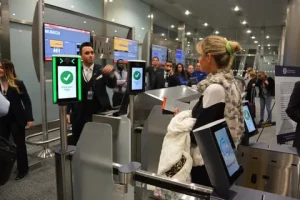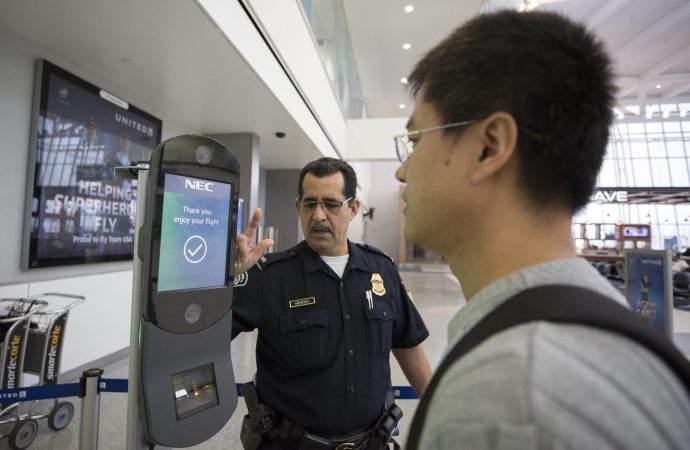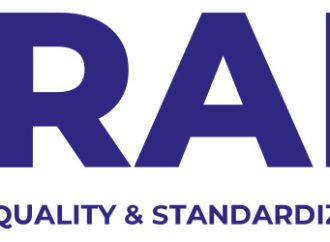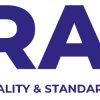Facial recognition technology has rapidly evolved from a futuristic concept to a practical tool used in various applications. In airports, this technology is being deployed to bolster security measures, expedite passenger processing, and provide a seamless travel experience. This article delves into the intricacies of facial recognition in airports, examining its benefits, challenges, and future
Facial recognition technology has rapidly evolved from a futuristic concept to a practical tool used in various applications. In airports, this technology is being deployed to bolster security measures, expedite passenger processing, and provide a seamless travel experience. This article delves into the intricacies of facial recognition in airports, examining its benefits, challenges, and future prospects.
Technology Behind Facial Recognition
Facial recognition technology leverages advanced algorithms and machine learning to identify and verify individuals based on their facial features. The process involves capturing an image of a person’s face, extracting unique features, and comparing them against a database of known faces. This technology has proven to be highly accurate and efficient, making it an ideal solution for enhancing travel security in airports.
Enhancing Travel Security
One of the primary benefits of facial recognition in airports is the enhanced ability to verify passengers’ identities. Traditional methods of identity verification, such as checking passports and boarding passes, are time-consuming and susceptible to human error. Facial recognition technology automates this process, ensuring that only authorized individuals gain access to secure areas.

Image by yandex.com
Reduced Fraud and Identity Theft
Facial recognition technology significantly reduces the risk of fraud and identity theft. By cross-referencing passengers’ facial features with government databases, airports can quickly identify individuals using fake identities or stolen documents. This added layer of security helps prevent unauthorized access and enhances overall safety.
Enhanced Surveillance and Monitoring
Facial recognition systems are also used for surveillance and monitoring purposes. Airports are vast and busy environments, making it challenging to keep track of every individual. Facial recognition technology enables real-time monitoring of passengers, allowing security personnel to identify and respond to potential threats swiftly. This proactive approach enhances overall security and minimizes the risk of incidents.
Streamlining Airport Operations
Facial recognition technology streamlines various aspects of passenger processing, from check-in to boarding. Automated kiosks equipped with facial recognition capabilities allow passengers to check-in quickly and efficiently. This reduces wait times and minimizes congestion at check-in counters.
Faster Security Screening
Security screening is a critical aspect of airport operations. Facial recognition technology expedites this process by automating identity verification at security checkpoints. Passengers can simply walk through facial recognition gates, eliminating the need for manual document checks. This not only speeds up the screening process but also enhances security by ensuring accurate identification.
Seamless Boarding Experience
The boarding process is often a bottleneck in airport operations. Facial recognition technology simplifies this process by allowing passengers to board using their facial features as identification. This reduces the need for boarding passes and minimizes delays, providing a seamless and efficient boarding experience.
Improving Passenger Experience
One of the most significant advantages of facial recognition in airports is the reduction in wait times. Automated processes and streamlined operations ensure that passengers spend less time in queues and more time enjoying their travel experience. This enhances overall passenger satisfaction and reduces stress associated with air travel.
Personalized Services
Facial recognition technology also enables personalized services for passengers. By identifying individuals and accessing their travel preferences, airports can offer tailored services and recommendations. This could include personalized dining options, shopping suggestions, and even targeted promotions, enhancing the overall travel experience.
Enhanced Accessibility
Facial recognition technology enhances accessibility for passengers with disabilities. Automated processes eliminate the need for physical documents, making it easier for individuals with mobility challenges to navigate the airport. This promotes inclusivity and ensures that all passengers have a smooth and hassle-free travel experience.
Challenges and Considerations
While facial recognition technology offers numerous benefits, it also raises significant privacy concerns. The collection and storage of biometric data have the potential to infringe on individuals’ privacy rights. It is crucial for airports and authorities to implement robust data protection measures and ensure transparency in the use of facial recognition technology.
Accuracy and Bias
Facial recognition systems are not infallible and can be prone to errors and biases. Factors such as lighting conditions, facial expressions, and even racial and gender biases can affect the accuracy of the technology. Continuous improvements in algorithms and rigorous testing are essential to mitigate these issues and ensure reliable and unbiased results.
Regulatory Compliance
The deployment of facial recognition technology in airports must comply with relevant regulations and legal frameworks. Different countries have varying laws and guidelines regarding the use of biometric data. Airports must navigate these regulatory landscapes and ensure that their use of facial recognition technology aligns with legal requirements.
Future Prospects
The future of facial recognition in airports lies in its integration with other emerging technologies. Combining facial recognition with artificial intelligence, blockchain, and Internet of Things (IoT) can further enhance travel security and operational efficiency. For example, AI-powered facial recognition systems can continuously learn and improve, while blockchain can provide secure and transparent data management.
Global Adoption
As facial recognition technology continues to prove its effectiveness, more airports worldwide are likely to adopt this innovation. The global adoption of facial recognition in airports will create a standardized and seamless travel experience for passengers. It will also facilitate international collaboration in enhancing travel security and combating global threats.
Continuous Improvement
Facial recognition technology is constantly evolving, with ongoing research and development aimed at improving its accuracy, efficiency, and reliability. As the technology matures, we can expect even more sophisticated and advanced facial recognition systems in airports. Continuous improvement will ensure that facial recognition remains a valuable tool in enhancing travel security.

Image by yandex.com
Conclusion
Facial recognition in airports is revolutionizing the way we travel, enhancing security, streamlining operations, and improving passenger experience. While challenges such as privacy concerns and accuracy issues exist, the benefits of this technology far outweigh the drawbacks. As airports continue to embrace facial recognition technology, we can look forward to a safer, more efficient, and seamless travel experience.






















